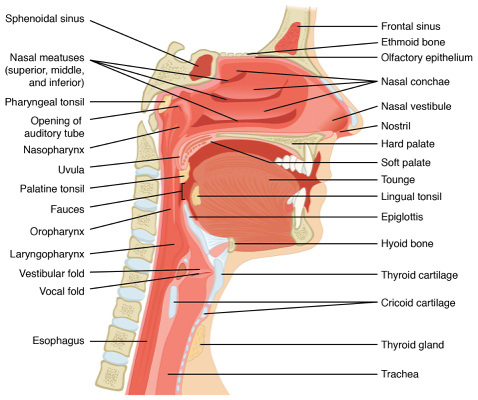
- The Effects of Vaping on the Voice - November 13, 2019
- Question: How do the ingredients in e-cigarettes and vaporizers affect respiratory health? - August 16, 2019
- Bad Technique and Vocal Injury - January 9, 2019
- Is Edible Marijuana Dangerous for the Voice? Myths Dispelled - December 18, 2018
- Surprise! You have a hemorrhage - January 31, 2018
- Graves’ Disease: Treatment Overview - September 25, 2017
- Adele and the Stigma of Vocal Injury - July 11, 2017
- Vocal Curbside Consult: How does the thyroid affect the voice? - May 16, 2017
- Vocal Curbside Consult: How do hormones affect the voice? - May 3, 2017
- Vocal Curbside Consult: How do emotion and stress affect the voice? - April 17, 2017
- Vocal Curbside Consult: Vocal Recovery After Illness - April 7, 2017
Although there is not yet significant or conclusive research on vaping and its effect on the larynx and voice, there is proof about the effect of cigarette smoking on the voice. Although some believe vaping is safer than smoking, this too has not been proven. Additionally, smoking and vaping have several characteristics in common that might suggest that vaping is injurious to the larynx and vocal cords.

What is vaping?
Vaping involves using an inhaler cartridge with vegetable glycerin and/or polyethylene glycol, flavoring, nicotine, and/or other substances. The cartridge is put inside an e-cigarette and a sensor in the e-cigarette is triggered to heat this liquid quickly, generating a vapor that is inhaled. Instead of burning tobacco, as in cigarettes, vaping creates a vapor that the user inhales.
What is in e-juice?
The most common chemicals that are found in a typical vape juice are nicotine, vegetable glycerin, and propylene glycol. Additional chemical substances can also be found in the juice depending on the flavoring; however, the e-juice also most commonly contains pyrazine additives, aldehydes (formaldehyde and acetaldehyde), and trace metals (nickel, chromium, cadmium, and tin). Many of these substances, especially nicotine and chemicals in the flavourings can be toxic and carcinogenic. Also, these substances may behave differently as a vapor than a liquid form; the vapor may potentially be more harmful.
Even though vaping does not burn tobacco, both cigarettes and e-liquids typically contain nicotine which is known to be addictive. In fact, e-juice generally contains higher amounts of nicotine than cigarettes; vape users can buy extra-strength cartridges with higher concentrations of nicotine. A single vape cartridge may contain the amount of nicotine found in almost 20 cigarettes.
How can smoking and vaping affect the larynx and vocal cords?

The vocal folds are located in the larynx and are involved in breathing and voice production. The smoke or vapor that is inhaled from cigarettes or vaping passes the delicate lining of the vocal cords.
Significant research has been conducted about the effect of cigarette smoking on the larynx and vocal cords. Several studies also suggest that exposure to electronic nicotine delivery systems can cause cellular hyperplasia (growth of cells) and metaplasia (change in cells) in mucosal lining in rats.1 It is theorized and likely that the same would occur in human tissue. Another experiment assessed the toxicity of vegetable glycerin, which is known to be harmless in liquid form. Its effects change in aerosol form. The experiment concluded that the substance led to squamous metaplasia of the epiglottis epithelium.2 Other research shows that nicotine in cigarettes is likely to lead to cancer, including in the mouth and larynx.3
If the delicate lining of the vocal cords are exposed to hot, vaporized chemicals, the tissues are likely to undergo change and lose their ability to behave normally.4 This may produce hoarseness, loss of vocal range, voice fatigue, or vocal injury.
How can these disorders affect one’s voice?
Vocal folds produce sound when they make a coordinated, symmetric and smooth vibration. This can be affected by irritants in the air that you breathe. Vaping produces a highly-irritating vapor that is inhaled past the vocal cords, causing inflammation of the lining of the vocal cords. When the lining is irritated, it is more fragile and easy to bruise. Also, it becomes more difficult to work with, making the singer or voice use need to push harder for sound production. Both of these phenomena make injury far more likely. Injury can include vocal fold nodules, polyps, cysts, or other injuries related to vocal trauma. Chronic vaping can also likely cause Reinke’s edema, a condition of chronic inflammation seen in smokers. Edema of the vocal folds leads to the reduction of the frequency range of the singer’s voice.5 Finally, it has been proven that vaping results in significant complications in the lungs, which are the power source for the voice6. Poor ventilation and inability to generate a strong breath results in a more pushed sound, with throat muscle use rather than breath support. This also increase the risk for injury.
These diseases and their effects on the voice can deeply affect singers and other people who use their voice for a living. The only option to avoid these is to abstain from vaping completely.
References:
- Salturk, Ziya. “Effects of Electronic Nicotine Delivery System on Larynx: Experimental Study.” Journal of Voice, 2015, www.jvoice.org/article/S0892-1997(14)00243-4/fulltext.
- Renne, R A. “2-Week and 13-Week Inhalation Studies of Aerosolized Glycerol in Rats.” Taylor & Francis, 2008, www.tandfonline.com/doi/abs/10.3109/08958379209145307?journalCode=iiht20.
- Joshua E. Muscat, Hsiao-Pin Liu, et al. “The Nicotine Dependence Phenotype, Time to First Cigarette, and Larynx Cancer Risk.” SpringerLink, Springer Netherlands, 25 Feb. 2012, link.springer.com/article/10.1007/s10552-012-9909-x.
- Renne, Roger A., and Katherine M. Gideon. “Types and Patterns of Response in the Larynx Following Inhalation – Roger A. Renne, Katherine M. Gideon, 2006.” SAGE Journals, 2006, journals.sagepub.com/doi/full/10.1080/01926230600695631.
- Gonzalez, Julio. “Early Effects of Smoking on the Voice: A Multidimensional Study.” Medical Science Monitor, 2004, www.medscimonit.com/download/index/idArt/13230.
- Christiani, D.C., et al. “Imaging of Vaping-Associated Lung Disease: NEJM.” The New England Journal of Medicine, 6 Sept. 2019, www.nejm.org/doi/full/10.1056/NEJMc1911995.



